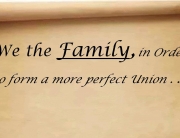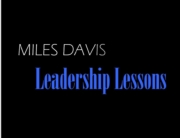I recently was privileged to sit in on a board meeting for a family business. How the board came to a decision on a contentious issue is a Lesson Found for all of us.
The business’s only remaining founding member* started the debate with an impassioned plea not to move ahead with the action being considered. The CEO concurred with this first speaker. Another member, Bob*, then suggested a method for moving forward with the action. The room was silent but I saw one board member shaking her head as if to say “yes”. Bob must have noticed this since he turned to that member to start a discussion about alternatives for how to undertake the action. After some debate among the full board, the decision was made to move forward with a plan which was an improvement over the original proposal. Even though the vote was a simple majority, the dissenters, including the founding member, fully backed the decision. I was impressed by the civil tenor of the conversation and active exchange of ideas even though this was clearly an emotional decision for all.
Our first Lesson Found comes from Bob’s “hearing” his fellow board member’s body language. In fact, it was not just one board member sending signals about their opinion of Bob’s idea. Another member was shaking his head indicating support; another perked up indicating openness to the idea; and another, known for his opposition to any action with arms crossed. Bob acknowledged the last member’s opposition and then relied on the non-verbal cues of the others to further the conversation resulting in the final decision of how to move forward. As is evident from this example, reading non-verbal cues in contentious situations can be equally important to listening to the dialogue. This is especially true within families where members believe they already know the response of their parents, siblings and children even before it is expressed.
The second Lesson Found is the importance of establishing ground rules for communication. After the meeting, board members recounted the board’s previous acrimonious history. Apparently, the atmosphere became so toxic that shareholders decided not to reappoint several members to the board and the new board agreed on ground rules for their meetings. Since then, conversations have been engaging but courteous even on contentious issues. More impressive, this form of engagement spread to management and is now prevalent throughout the company.
Sometimes the environment within a family business can deteriorate to the point where rational conversations can seem impossible. Then it is time to consider engaging a professional experienced in working with family businesses who can mediate and moderate so the family can come to consensus on how to move forward.
Interested in learning more about how your family and/or business can foster productive communication styles? Email me or call (717-439-6254) to setup your free initial consultation.
*The exact circumstances of this board meeting and “Bob’s” name have been masked to protect the business’s anonymity.
Life brings us lessons every day. Sometimes from expected sources. And sometimes from sources and situations we never would have thought possible. Either way, they are a gift found. I am fortunate to find these types of lessons regularly and wanted to share them with you with this weekly series of “Lessons Found”.
Did you recently receive the gift of a Lesson Found that has helped you with management, marketing or another aspect in business? I would love to hear about it. Comment below or send me an email to let me know.
ACKNOWLEDGEMENTS: Image of board meeting from Pixabay.













































































